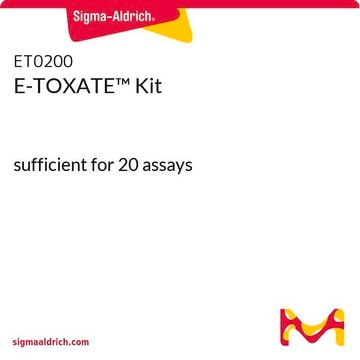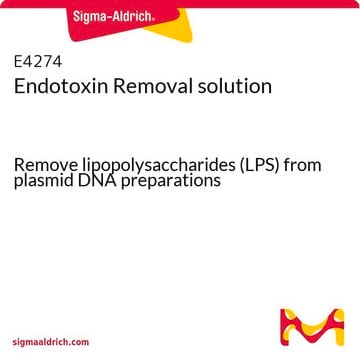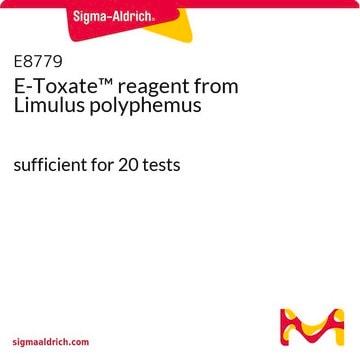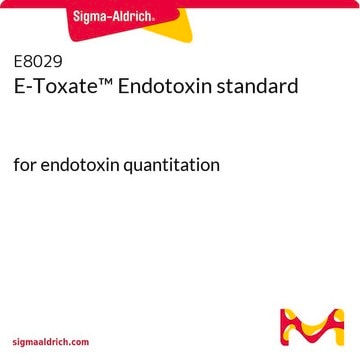E9029
E-Toxa-Clean® Concentrate
alkaline detergent
Synonym(s):
Endotoxin removal agent
Sign Into View Organizational & Contract Pricing
All Photos(1)
About This Item
UNSPSC Code:
12352202
NACRES:
NA.26
Recommended Products
Related Categories
Application
E-Toxa-Clean® Concentrate has been used to destroy all the endotoxins in the glasswares. It is also been used to destroy the contamination of low density lipoprotein (LDL)(+) and LDL(−) with lipopolysaccharide (LPS).
Use at 1% in hot tap water.
Biochem/physiol Actions
Alkaline detergent for pre-cleaning glassware prior to inactivation of endotoxin by steam sterilization or baking.
Legal Information
E-Toxa-Clean is a registered trademark of Merck KGaA, Darmstadt, Germany
related product
Product No.
Description
Pricing
Signal Word
Danger
Hazard Statements
Precautionary Statements
Hazard Classifications
Acute Tox. 4 Oral - Eye Dam. 1 - Skin Irrit. 2
Storage Class Code
11 - Combustible Solids
WGK
WGK 2
Flash Point(F)
Not applicable
Flash Point(C)
Not applicable
Personal Protective Equipment
dust mask type N95 (US), Eyeshields, Gloves
Certificates of Analysis (COA)
Search for Certificates of Analysis (COA) by entering the products Lot/Batch Number. Lot and Batch Numbers can be found on a product’s label following the words ‘Lot’ or ‘Batch’.
Already Own This Product?
Find documentation for the products that you have recently purchased in the Document Library.
A rapid protocol for construction and production of high-capacity adenoviral vectors.
Jager L, et al.
Nature Protocols, 4(4), 547-547 (2009)
Electronegative LDL induces priming and inflammasome activation leading to IL-1 beta release in human monocytes and macrophages.
Estruch M, et al.
Biochimica et Biophysica Acta - Molecular and Cell Biology of Lipids, 1851(11), 1442-1449 (2015)
Lorenz Jager et al.
Nature protocols, 4(4), 547-564 (2009-04-18)
High-capacity adenoviral vectors (HC-AdVs) lacking all viral coding sequences were shown to result in long-term transgene expression and phenotypic correction in small and large animal models. It has been established that HC-AdVs show significantly reduced toxicity profiles compared with early-generation
Our team of scientists has experience in all areas of research including Life Science, Material Science, Chemical Synthesis, Chromatography, Analytical and many others.
Contact Technical Service










